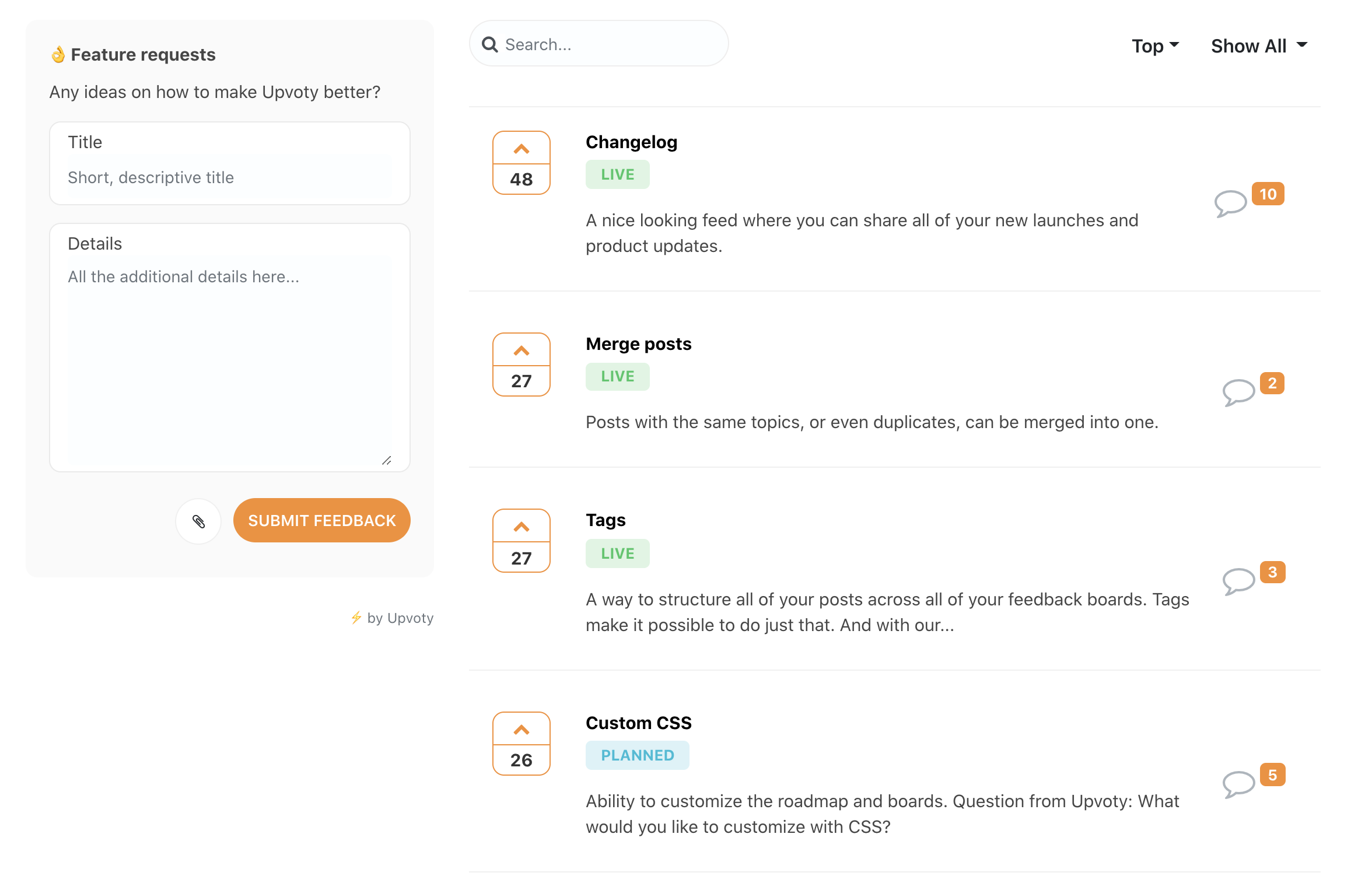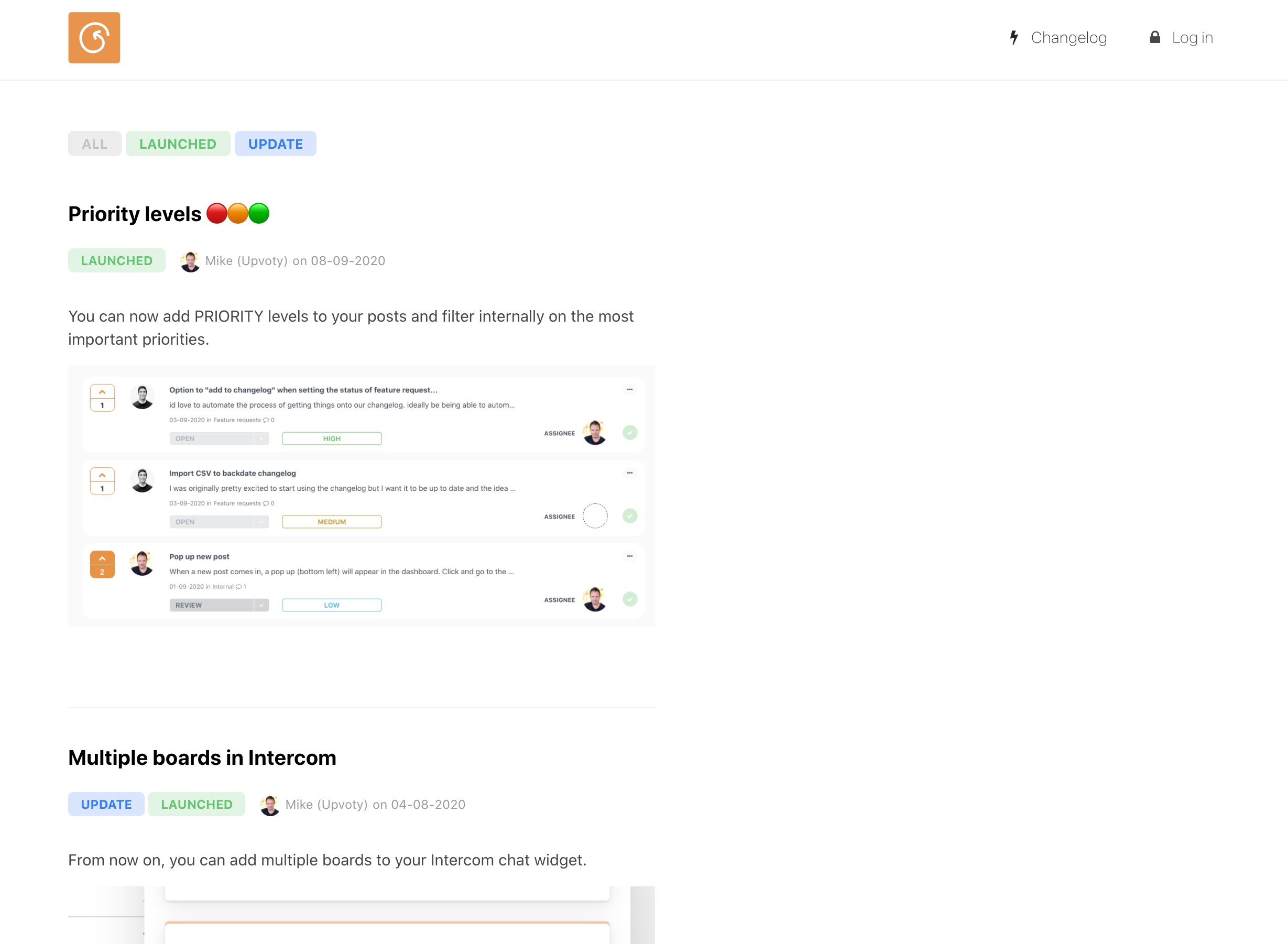How to Avoid Building Features That Nobody Will Use
Are you guilty of creating a new product feature only to discover that no one needs it? How frustrating, isn't it? Especially when thinking about the time and money you’ve invested in creating this new feature or solution. And all that because the chase for growth is real, and you want to deliver value to your users. That’s understandable.However, what if you could change your approach and actually avoid being in a situation where your customers aren’t interested in your new product add-on? Can you do that? Our answer is “yes,” and we’ll show you how, but first, let’s discuss finding the right balance between improving your SaaS platform and avoiding adding useless features to your product.
Feature creep: the inability to execute on the core value of your product
As Hiten Shah, the co-founder of Crazy Egg, KISSmetrics, and Quick Sprout, notes, “Why do companies end up building unnecessary features in the first place? Over time product organizations grow more complex with different teams and stakeholders, which makes product management more difficult. Your customer base also evolves, which means you constantly have to think about how you’re executing on value for customers.”In fact, there’s one term called “feature creep” that may keep companies from delivering the value promised to customers. According to Shah, “Feature creep has become one of the dirtiest terms in the product management world. When companies notice that they’ve added a ton of features to their product over time, they automatically wonder if they’ve fallen victim to feature creep.”As he suggests, when you have a bunch of features that don’t improve your product’s value, chances are your company is experiencing the inability to execute on the core value of its product. And that’s a big problem, considering the potential risks. First, you’ll be wasting your team’s time and your investors’ money (or your own money, if you’re bootstrapping). Second, you’ll end up having a clunky product that no one likes or enjoys. This will lead to an increased churn rate and a revenue decrease.So what are the reasons that lead to feature creep? Let’s discuss them!
Why do you end up building useless features?
 Is this inevitable? Do you just wake up one morning realizing you’ve added a bunch of features nobody is using? Obviously, not. There are certain behavior patterns and reasons that lead you to produce a product with useless features.Let’s look at each of these behaviors individually:
Is this inevitable? Do you just wake up one morning realizing you’ve added a bunch of features nobody is using? Obviously, not. There are certain behavior patterns and reasons that lead you to produce a product with useless features.Let’s look at each of these behaviors individually:
Behavior 1: You’re involving too many people in the process
- Who’s deciding what your product should look like?
- Who is involved in the process of updating the roadmap?
- Are your investors having a say?
- Is your marketing team pushing you to add more features and make your product “more competitive?”
- Are the developers the ones deciding what your software should look like?
- Are the co-founders obsessed with adding as many features as possible?
You see, the more people who are involved in the product update process, the weaker the results will be. Everyone will have an opinion about the things you should add, but only a few will bear the consequences.
Behavior 2: You’re ignoring your paying users
Are the investors using your product, or is it the people who are paying around $15 monthly or $150 annually for your software? Although the investors are also greatly contributing to your growth, your users are the ones who’ll help you increase your annual revenue. But if you don’t pay attention to their needs—or worse, don’t even bother to listen to their feedback—chances are you’ll end up with feature creep and a higher churn rate.
Behavior 3: You’re paying attention to the wrong customer feedback
If you’re collecting feedback (and we recommend you do so; otherwise, you’ll lose touch with your customers), you’re running the risk of focusing on the wrong input. Clients who have made a significant investment in your product over time may ask you, for example, to add a specific feature that will solve one of the problems they’re encountering. But this feature may be solely adjusted to their needs and completely irrelevant for 99% of your other customers. And that’s how you end up having a bunch of unnecessary features.
Behavior 4: You’re not evaluating the product-market fit consistently
That’s a big one, and we won’t ever get tired of repeating it. Most entrepreneurs believe that product-market fit evaluation is a one-time activity. But guess what—the market is always changing, and you should be always aware of the new trends and shifts. If not, your new features won’t be up to date with the new market requirements, and you’ll be losing big-time.
Behavior 5: You have a weak product vision
Do you know how your product should look in a year? Or do you just have a list of features you want to add? Not having a clear product vision or knowing what exactly you’re developing, for whom, and for what will result in a bunch of “updates” and “improvements” that no one will need. Your product vision is the core of your software. Not having one or developing a weak product vision will lead to feature creep in no time.
Behavior 6: You want to add more value, but you forget that less is more
Generate massive value consistently—that’s the mantra most SaaS companies follow. The need to be useful and update your product is understandable. After all, the users are paying for this renewable service. However, adding more doesn’t mean your product will be better.Now it’s pretty clear why you’re running the risk of not adding better features and having an undesirable product that is hard to learn and use. Can you keep this from happening? Absolutely! Keep reading to discover how.
Steps to avoid building useless features
 You can definitely avoid feature creep and build high-quality, valuable features that people will love and use. All it takes is following a few easy steps:
You can definitely avoid feature creep and build high-quality, valuable features that people will love and use. All it takes is following a few easy steps:
Step 1: Assess the way people are using your SaaS product
Start by analyzing the behavior of your users. Did they incorporate your product into their workflow? Are they accessing your software often? Do they achieve good results by using it? You can discover the answers to these questions by both tracking your users’ behavior and talking to your customers directly.Knowing how your users are engaging with your product will give you the necessary insights regarding the value you’re creating and the things that are missing. For example, you may discover that your users do everything marketing-related using your platform, but they need to combine it with another solution to set up email campaigns.This simple detail will give you the essential information to know what to improve (such as adding an email sequence feature). You don’t want to just start launching countless features thinking everything is useful—you’ll want to carefully analyze how your users are interacting with your platform, and then cover the gaps with the right add-ons.
Step 2: Don’t disrupt your users’ workflow
Quite often, a new, clunky feature means more work for your users. First, they need to learn more about it and see how they can adapt it to their needs. And this involves a serious disruption of their workflow. If your feature is not relevant or crucial, chances are people will ignore it.So when working on a new feature, ask yourself if it will add or reduce friction. If it’s the former, chances are you don’t need it. After all, you want to keep your users happy, and you don’t want to interfere with their workflow by causing them stress or making the learning curve steeper than it is.
Step 3: Create a solution, instead of a fancy feature
That’s a big one. People may believe that adding a new feature equals adding value, and that’s so wrong. On the contrary, creating a new feature (without thinking it over carefully) may add confusion and unnecessary friction. What you’ll want to do instead is add a solution.Whenever you’re about to launch a new feature project for your product design and development teams, always ask yourself if the things you’ll be working on are meant to solve a very specific challenge that was left uncovered. If not, don’t even bother. The best way to know that you’re creating a solution and not a fancy feature is by connecting with your users.
Step 4: Trust data, instead of your gut feeling
To continue the point above, collecting feedback from your users will help you immensely in highlighting those burning pains your customers have. And Upvoty can help you with that. To launch a truly useful feature, you need to be sure people actually need it. The best way to figure that out is by paying attention to your users’ feedback, prioritizing it, and transforming it into clear actions.Don’t just jump into creating a new feature because you “think” or “feel” it will help. You need to back up your actions with data. Otherwise, you won’t have any substantial proof that it will be a success. So make an effort, set up a feedback collection system, and start monitoring the input of your paying users. You’ll find gold nuggets in there, we promise!
To launch a truly useful feature, you need to be sure people actually need it. The best way to figure that out is by paying attention to your users’ feedback, prioritizing it, and transforming it into clear actions.Don’t just jump into creating a new feature because you “think” or “feel” it will help. You need to back up your actions with data. Otherwise, you won’t have any substantial proof that it will be a success. So make an effort, set up a feedback collection system, and start monitoring the input of your paying users. You’ll find gold nuggets in there, we promise!
Step 5: Communicate your new feature using the before-after framework
In some cases, your feature can truly be a game-changer, but when communicated incorrectly, people will ignore it, thinking it’s a useless add-on. That’s why you’ll want to carefully work on how you communicate updates. When it comes to new features, you can use the before-after framework. You can write an article for your Changelog (check ours here) or blog, create a presentation, or film a short video showing how things were before, why it was problematic, and how this new feature solves the problem and adds more value. Then, you can set up an email campaign and inform all of your users about this update.
You can write an article for your Changelog (check ours here) or blog, create a presentation, or film a short video showing how things were before, why it was problematic, and how this new feature solves the problem and adds more value. Then, you can set up an email campaign and inform all of your users about this update.
Quick recap
Feature creep is real, and you want to avoid it at all costs. Otherwise, you’ll end up with a lot of users canceling their subscription and turning toward a better alternative (aka your SaaS competitor). To keep this from happening, assess the way your users are engaging with your platform and identify the issues they may have. You can also keep an eye on your users’ needs by collecting their feedback, prioritizing their input, and adding relevant requests to your roadmap. Nothing beats direct interaction with your customers. No one knows what they need better than themselves.Also, when creating a new feature, ask yourself if you’re adding stress to your users’ workflow. Stop working on things that will complicate the use of your product. Also, focus on creating a solution instead of an elaborate feature. No one wants to access a cluttered dashboard of fancy options that don’t do much. Finally, you may end up creating a good feature, yet people aren’t using it because they don’t know about it, so always communicate all new updates clearly and in a timely manner.

